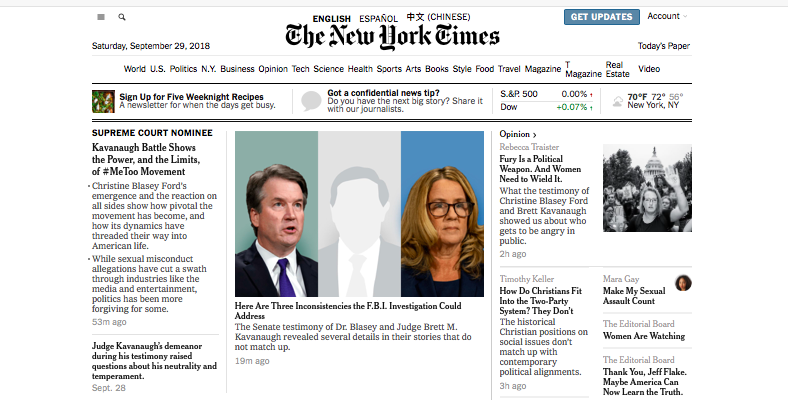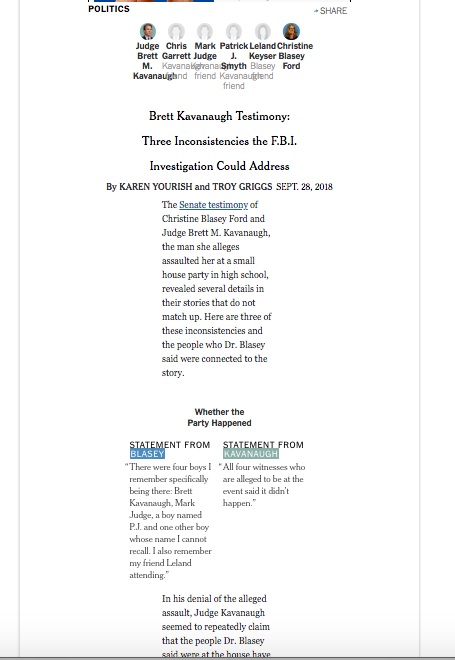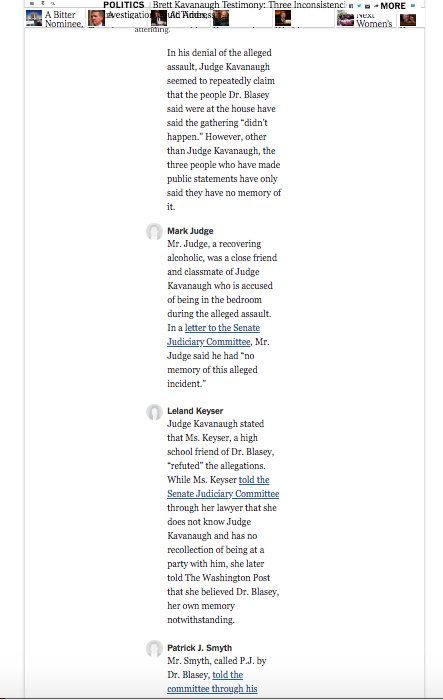What has been a constant barrage of “he said, she said” in the confirmation hearings of Judge Brett Kavanaugh in his quest of a seat in the Supreme Court took a dramatic turn Friday afternoon, when both Democrats and Republicans agreed to have a one-week FBI investigation of the charges of sexual assault that Prof. Christine Blasey Ford has brought against Judge Kavanaugh.
The average person has been bombarded with so much information about this controversy and the news cycle is so crazy and furious, that it is difficult to keep up with the developments, and to understand them clearly.
That is why I was so appreciative of The New York Times taking one story in particular and presenting it in a non narrative way, which made the analysis of the areas in which the FBI investigation could be effective in solving some of the unanswered questions about that fateful summer night in 1982 when Prof. Ford alleges that she was sexually attacked by Judge Kavanaugh and his friend.
Take a look at how the story was presented first, as a lead item on the Times’ website:

The story has an introduction, but the visuals at the top (the two principal players in the controversy, then the blank spots for potential witnesses):

Notice the juxtaposition of what she said, he said (a fantastic way to present this information much more clearly than it would be possible in a traditional narrative format). Then, see here how each of the potential witnesses is presented in the story:

Then on the question of whether Prof. Ford and Judge Kavanaugh even knew each other in high school:

Not every story is meant to be told this way, but, in the digital age, and for stories where graphic description helps to clarify the subject matter, the non-narrative approach should be considered.
This begins with an editor and/or reporter who plans to tell the story this way. Especially when working under the stress of deadlines for fast developing news, I understand how easy it may be NOT to consider this style of reporting the news, but I am happy to see that the Times, The Washington Post, and The Guardian, among others, show us that it can be done effectively.
Good role models to follow.
Read the complete story here:
Brett Kavanaugh Testimony:
Three Inconsistencies the F.B.I.
Investigation Could Address
TheMarioBlog post #2922